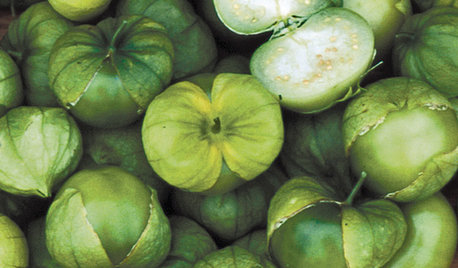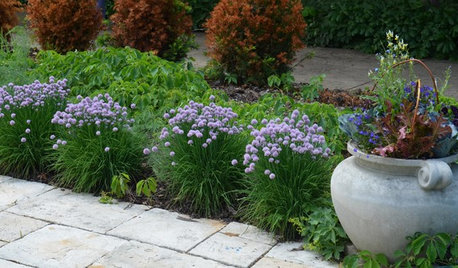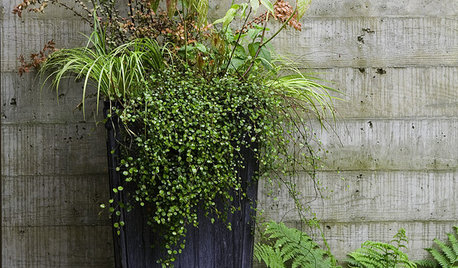Wilted tomato plant and damaged tomato
tbs727
12 years ago
Related Stories

EDIBLE GARDENSSummer Crops: How to Grow Tomatoes
Plant tomato seedlings in spring for one of the best tastes of summer, fresh from your backyard
Full Story
LIFEKitchen Traditions: Tomato Season Meets a Family Legacy
Somewhere a Sicilian great-great-grandmother is smiling at a bowl of American-made sauce
Full Story
ARCHITECTUREHouzz Tour: Fresh Ideas in a Former Tomato Packing Shed
A formerly metal-clad structure is now a beautiful wood home designed to capture the light and preserve open space
Full Story
EDIBLE GARDENSGarden BFFs? Why Your Vegetables Are Begging for Companion Plants
Foster friendships among plants for protection from pests, pollination support and color camaraderie
Full Story
SUMMER FRUITS AND VEGETABLESSummer Crops: How to Grow Tomatillos
Grow this Mexican native for the freshest salsa verde — and for fewer problems than its tomato cousins
Full Story0

GARDENING GUIDESCalifornia Gardener's June Checklist
Update your hydrangeas, catch up on tomatoes and more ways to enjoy your California garden in June
Full Story
GARDENING GUIDESGreat Garden Combo: 3 Wonderful Plants for a Deer-Resistant Screen
Protect your privacy and keep deer at bay with a planting trio that turns a problem garden area into a highlight
Full Story
FALL GARDENINGWhy Fall Is the Best Time for Planting
Spring is overrated for planting. Starting plants in autumn has advantages for both garden and gardener
Full Story
GARDENING GUIDESEdible Plants That Double as Ornamentals
Try growing these tasty plants with your ornamentals for an attractive garden and fresher meals
Full Story
GARDENING GUIDESThe Secret Formula for Grouping Plants in a Pot
Designing a gorgeous container garden is easy once you know this simple rule of thumb for composition
Full StoryMore Discussions






korney19
tbs727Original Author
Related Professionals
Manhattan Beach Landscape Architects & Landscape Designers · Pelham Landscape Contractors · Canton Landscape Contractors · La Vista Landscape Contractors · Mendota Heights Landscape Contractors · Mission Viejo Landscape Contractors · Munster Landscape Contractors · Columbus General Contractors · Cottage Grove General Contractors · Hillsboro General Contractors · Melville General Contractors · Arbutus Decks, Patios & Outdoor Enclosures · Brooklyn Park Decks, Patios & Outdoor Enclosures · Midwest City Decks, Patios & Outdoor Enclosures · Mitchellville Decks, Patios & Outdoor Enclosurestbs727Original Author
tbs727Original Author
digdirt2
terrybull
tbs727Original Author
jean001a
digdirt2
tbs727Original Author
lionheart_gw (USDA Zone 5A, Eastern NY)
tbs727Original Author
tbs727Original Author
suncitylinda
lionheart_gw (USDA Zone 5A, Eastern NY)
lionheart_gw (USDA Zone 5A, Eastern NY)
tbs727Original Author
ally99
lionheart_gw (USDA Zone 5A, Eastern NY)
lionheart_gw (USDA Zone 5A, Eastern NY)
ffreidl